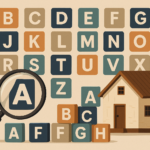Thinking about how to refinance home loan options? It's a big step, and you probably have a lot of questions. Maybe you've heard friends talk about a mortgage refinance, or perhaps you've seen ads promising lower mortgage rates. You want to know if a refinance home loan could be the right move for you. You've come to the right place for clear, straightforward information on whether it's time for a change.
So, What Exactly Is a Home Loan Refinance?
Let's break it down. When you refinance your home loan, you are essentially replacing your current mortgage loan with a new one. This new loan pays off the balance of your old loan. Then, you start making payments on the new loan, which will have its own specific loan type and terms.
This process is a bit like trading in your current car for a newer model with different financing terms. It's a fresh start for your home financing. Many homeowners explore refinancing options when market conditions change or their financial goals shift.This is different from simply refixing your interest rate. Refixing usually happens with your existing lender when your fixed-rate period, such as for a five year fixed product, ends. You just agree to a new fixed rate for another set term. Restructuring your loan is also different; that involves changing the setup of your current loan, like switching from a variable rate to a fixed rate, or changing payment frequency, all with the same lender.
A refinance home loan often means you're moving to a completely different refinance lender. But, you can sometimes refinance with your current lender too; they might offer competitive refinance rates loan packages to retain your business. The key is that a new loan agreement is created for your loan refinance. This new agreement will have its own interest rate, loan term, and potentially different features, affecting your overall loan amounts and monthly payments.

Tip: Check out what different monthly repayments could be by using the mortgage repayment calculator at squirrel.co.nz
Why Do People Choose to Refinance Home Loan Plans?
There are quite a few reasons why homeowners decide to go down the refinancing path. Everyone's situation is different, and what works for one person might not be the best for another. But some common goals pop up again and again when people consider refinancing.
One of the most popular reasons is to get a lower interest rate, potentially improving their current mortgage rates. If interest rates have dropped since you first got your mortgage, refinancing could lower your monthly payments. A lower loan rate can also mean paying less interest over the life of your loan, which could save you thousands of dollars, making it an attractive part of wealth management.
Some people refinance to shorten their loan term. Maybe you initially took out a 30-year loan but now you can afford higher payments. Refinancing into a 15-year or 20-year year term loan means you'll pay off your home faster. You'll also pay much less interest overall, although your monthly payments will likely increase with the shorter term.
Another reason is to switch from an adjustable-rate mortgage (ARM) to a fixed-rate mortgage, such as a 15 year fixed rate or 30-year fixed mortgage. ARMs can be good at first with low introductory rates. But, their rates can go up, making your payments unpredictable. A fixed-rate mortgage gives you stability; your principal and interest payment stay the same for the life of the loan. Many find this peace of mind very attractive and seek it through a mortgage refinance.

Sometimes, it's not about the rate or term but about the lender itself. You might be unhappy with your current lender's customer service or their online banking platform. Or perhaps another refinance lender is offering great incentives or features, like a better savings account or personal checking options, that appeal to you. Changing lenders through a refinance is a way to find a better fit.
Consolidating debt is another powerful motivator. If you have multiple high-interest debts, a debt consolidation refinance can roll them into your new, potentially lower-rate mortgage. This can simplify your finances and reduce your overall monthly payments.
Tapping Into Your Home Equity
Your home equity is a valuable asset; it's a key part of your financial picture. It's the difference between what your home is worth and what you still owe on your mortgage. As you pay down your mortgage and as your home's value (hopefully) increases, your home's equity grows. Refinancing can be a way to access this equity through an equity loan structure.
This is often called a cash-out refinance. With a cash-out refinance home loan, you take out a new mortgage for more than what you currently owe. The lender pays off your old mortgage. Then, you receive the difference in cash. People use this cash for all sorts of things, from funding a small business to managing student loans.
Home improvements are a very common use for funds from a cash-out refinance. Upgrading your kitchen, adding a bathroom, or building an extension can increase your home's value. These projects can also improve your quality of life. Using home equity for these improvements can be smarter than using high-interest credit cards or unsecured personal loans.
Debt consolidation is another major reason. If you have high-interest debts like credit card balances, personal loans, or even a student loan, rolling them into your mortgage can make sense. Mortgage interest rates are typically much lower than rates on other types of debt. This could lower your total monthly debt payments and save you interest, although it means securing previously unsecured debt with your home.
Other uses for a cash-out refinance include paying for education expenses, helping your children with their student loans, or starting a small business. Some even use it for funding a large purchase like a second property or a dream vacation. The money is yours to use as you see fit; however, it's important to spend it wisely because you are increasing your mortgage debt and the overall loan amounts.

Refinancing Through Life's Big Changes
Life rarely stays the same for long, does it? Big life events can often trigger the need or desire to refinance your home loan. Your financial situation or housing needs might change dramatically, making you explore options for your mortgage.
Getting married is a happy occasion that often involves merging finances. You and your new spouse might want to put the house and mortgage in both your names. This usually requires refinancing. This action helps both partners share the responsibility and the asset fairly.
Sadly, divorce is another life change that can necessitate refinancing. If one partner is keeping the house, they typically need to refinance the mortgage solely in their name. This removes the other ex-partner's name from the loan and property title. It's a crucial step in separating financial ties, often stipulated in divorce agreements.
Sometimes, your income might decrease, or your expenses might go up unexpectedly. This could be due to job loss, illness, or welcoming a new baby. If you're struggling to meet your current mortgage payments, refinancing could help. You might be able to extend your loan term to reduce your monthly payments, giving you some breathing room, even if it means a longer term overall. While this might mean paying more interest over time, it can help manage your immediate cash flow challenges.
The Costs: What to Expect When You Refinance
It's important to go into refinancing with your eyes open; understanding the costs required is fundamental. While it can save you money, it's not usually free, and upfront costs can be a factor. There are several potential costs involved, and you need to weigh these against the potential benefits before proceeding with your refinance loan.
If you're breaking a fixed-rate mortgage term early, your current lender might charge a break fee. This fee compensates the lender for potential interest losses. These can sometimes be quite substantial, so always check with your current lender first. You might also have to repay any cash incentives you received when you first took out your mortgage if you refinance too soon.
There are usually closing costs, similar to when you first bought your home during the initial buying process. These can include:
- Application fees: Charged by the new lender to process your application when you apply online or in person.
- Appraisal fees: The new lender will likely want an updated appraisal of your home's value. This informs them they aren't lending more than the property is worth.
- Title search and title insurance fees: These check for any liens or claims against your property and protect the lender.
- Attorney or settlement fees: Costs for legal work and to handle the loan closing.
- Recording fees: Fees charged by your local government to record the new mortgage.
- Discharge fees: Your old lender might charge a fee to discharge your existing mortgage.
Sometimes, a new lender might offer to cover some or all of these closing costs. This is often part of a promotional offer to win your business. Always ask what costs are involved and if any can be waived or covered. These costs can add up to several thousand dollars, so they can impact your overall savings from the refinance process. Understanding the closing disclosure document is very important before you commit, as it will detail all fees before the loan closes.

Tip: Remember to review your lender's privacy policy if you apply online, and be aware of how they might use information, sometimes tracked by an advertising cookie on their website.
How Many Times Can You Actually Refinance Your Home Loan?
This is a common question when homeowners consider mortgage adjustments. The surprising answer is, generally, as often as you want and qualify. There isn't a strict legal limit on the number of times you can refinance home loan arrangements. Lenders will assess your application each time based on your current financial situation, creditworthiness, and home equity.

Note: Just because you can refinance multiple times doesn't always mean you should. Each refinance comes with those costs we just talked about. If you refinance too frequently, these costs can eat away at any potential savings. It's a numbers game; the benefits must outweigh the expenses each time you consider a loan refinance.
Also, each mortgage application typically involves a hard credit inquiry. Too many hard inquiries in a short period can potentially lower your credit score. A lower credit score could mean less favorable loan terms or even denial for future credit. You can learn more about how inquiries affect your credit from sources like Experian's credit insights.
Some lenders might also have "seasoning" requirements. This means they want to see that your current mortgage has been in place for a certain period, perhaps six months to a year, before they'll consider refinancing it. This is to prevent rapid, repeated refinancing that might signal instability to the refinance lender.
So, while there's no magic number, it's wise to refinance strategically. Do it when it makes clear financial sense for your goals. It's not something to do on a whim, but rather a calculated step in managing your finances.
Is Refinancing the Right Move for Your Financial Goals?
Deciding to refinance home loan terms is a big financial decision. It's not a one-size-fits-all solution. You need to think carefully about your own circumstances and goals; what are you hoping to achieve when you're refinancing?
First, crunch the numbers using a refinance calculator. How much will you save with a lower interest rate or a shorter term? Many lender websites and independent financial sites offer these tools. Be sure to factor in all the closing costs and the annual percentage rate (APR) to find your "break-even point." This is the point at which your monthly savings have covered the cost of refinancing. If you plan to stay in your home longer than your break-even point, refinancing might be a good idea.

Tip: Consider how long you plan to stay in your home.
If you're thinking of moving in the next year or two, the savings from refinancing might not be enough to offset the upfront costs. The longer you stay, the more you benefit from a lower loan rate. Also, explore options for different loan types to see what best fits your timeline.

Tip: Think about your current financial stability.
Do you have a steady income and a good credit score? Lenders will look at these factors. A strong financial profile will help you qualify for the best refinance rates and terms. If your finances are a bit shaky, it might be better to wait until things improve. It might be time to refinance explore your options more thoroughly.
If you're considering a cash-out refinance, have a clear plan for the money. Tapping into your home's equity increases your mortgage debt, potentially leading to a higher mortgage. Make certain you're using the cash for something that provides long-term value or helps improve your overall financial health. Avoid using it for discretionary spending if it puts your home at risk.

Tip: Talking to a financial advisor or a mortgage professional can be really helpful.
They can review your situation, explain your refinancing options, and help you make an informed choice. They can also help you shop around for the best deals from different lenders, comparing current mortgage rates effectively.
Getting Ready: What Lenders Look For
When you apply to refinance your home loan, often through an online banking portal or by direct application, lenders will look at several key things. They want to be confident that you can repay the new loan. Being prepared can make the refinance process smoother and increase your chances of approval.
Your credit score is a big one. Lenders use it to gauge your creditworthiness. A higher score usually means access to lower interest rates and better terms for your mortgage loan. Check your credit report before you apply. Correct any errors you find.

Tip: If your score is lower than you'd like, try to improve it by paying bills on time and reducing credit card debt. Many resources explain how credit scores affect your finances.
Your income and employment history are also important. Lenders want to see stable income that's sufficient to cover your new mortgage payment and other debts. You'll likely need to provide pay stubs, W-2 forms, and tax returns. Be prepared with all your loan documents.
Debt-to-income ratio (DTI) is another critical factor. This compares your total monthly debt payments (including the proposed new mortgage) to your gross monthly income from sources like your job or even a savings account or personal checking. A lower DTI is better. Lenders have DTI limits, and exceeding them can lead to denial.
And of course, there's your home equity. For a rate-and-term refinance, you'll typically need at least some equity. For a cash-out refinance, lenders usually require you to maintain a certain amount of equity, often 20%, after taking cash out. This means they won't lend you the full value of your home. One potential benefit of having sufficient equity when refinancing is the possibility of eliminating private mortgage insurance (PMI) if your loan-to-value ratio drops below 80%. This can lead to significant monthly savings in addition to any interest rate reduction.
Gather all your financial documents early, including bank statements from your checking account and any investment account statements, and information about your current mortgage. Having everything ready will speed up the application process when you apply online or in person. Be prepared to answer questions about your finances and your reasons for refinancing. This proactive approach will help your application proceed more efficiently once it's time for the loan closing.
In Closing
Deciding whether to refinance home loan plans is a significant step that needs careful thought. It can offer real benefits, like lower payments or access to cash for things like managing student loans or investing in a small business. But, it also comes with costs required and isn't the right choice for everyone; you must consider if you can afford a higher mortgage if that's the outcome.

Note: By understanding what's involved, from the initial refinance process to when the loan closes, and assessing your own situation, you can make a smart decision.
Compare current mortgage rates, use a refinance calculator, and prepare your loan documents thoroughly. A carefully planned refinance home loan, possibly using an efficient online banking system to apply online, can be a powerful tool for managing your finances and achieving your goals.
Remember to review all refinancing options and speak with a trusted refinance lender. This preparation will help you determine if it's time to take advantage of potentially lower refinance rates or access your home's equity.














